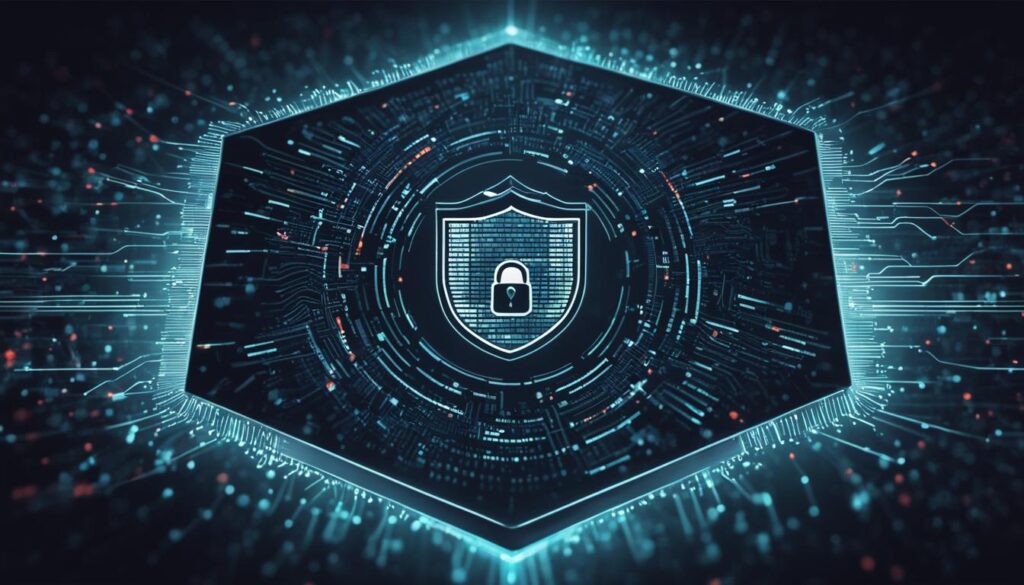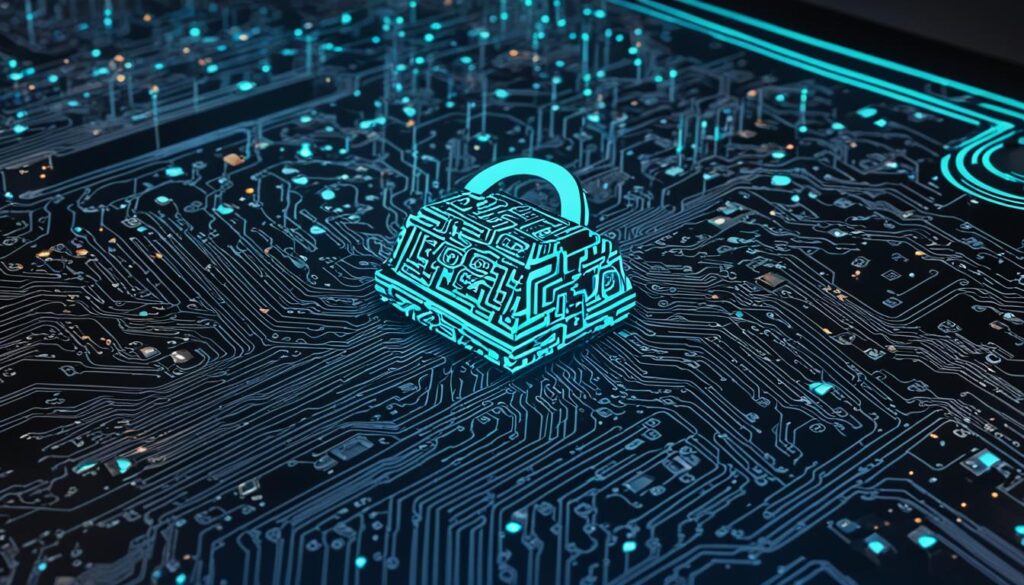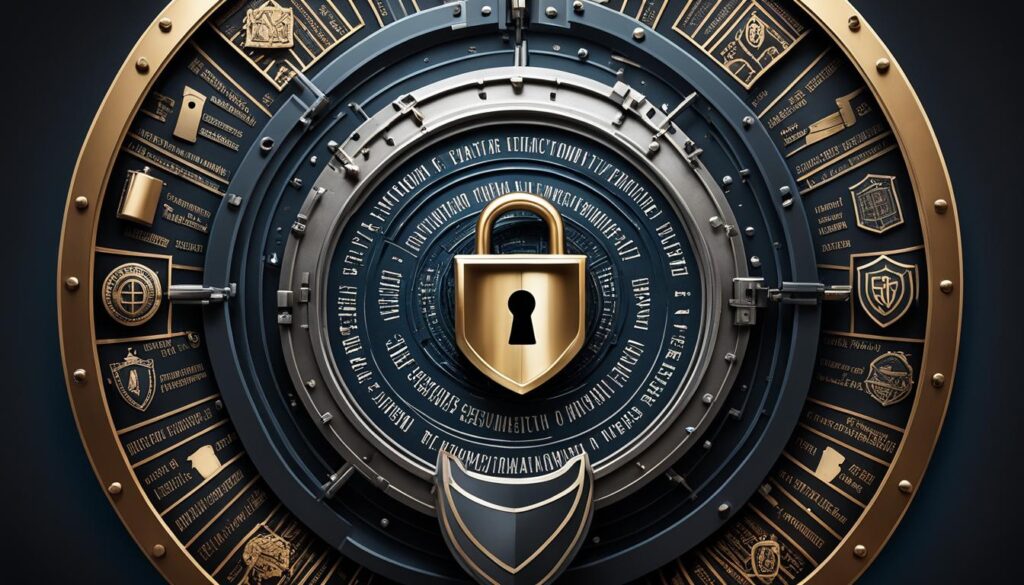Greetings! In this article, I will delve into the world of cyber security and provide you with essential information that will help you grasp its significance in today’s digital age.
Cybersecurity, put simply, is the protection of internet-connected systems such as hardware, software, and data from cyber threats. It plays a crucial role in safeguarding our digital lives by preventing unauthorized access and protecting against attacks and data breaches.
Why is cyber security important? Well, it ensures the protection of sensitive information, guarantees business continuity, and maintains the privacy and trust of customers and stakeholders. With cyber threats becoming increasingly sophisticated, cybersecurity is an ever-evolving field that requires constant vigilance and adaptation.
Various measures and best practices are employed in cybersecurity to mitigate risks and secure networks, devices, and data. From malware and phishing to DDoS attacks and insider threats, cyber threats are diverse and ever-present. Additionally, cybersecurity also faces challenges such as the data deluge, cybersecurity awareness training, workforce shortage, and supply chain risks.
While cyber threats may seem daunting, automation and artificial intelligence (AI) are also utilized in cybersecurity to bolster threat detection, response, and mitigation. Cybersecurity vendors offer a wide range of tools, including identity and access management, firewalls, endpoint protection, encryption tools, and vulnerability scanners, to fortify defenses.
If you’re an IT professional seeking a rewarding career, the field of cybersecurity presents great opportunities. Keep reading to discover the basic measures you can take to protect your business and the renowned NIST Cybersecurity Framework.
Key Takeaways:
- Cybersecurity protects internet-connected systems from cyber threats.
- It is vital for safeguarding sensitive information and ensuring business continuity.
- Cybersecurity faces challenges such as evolving threats and a shortage of skilled professionals.
- Automation and AI play a role in enhancing threat detection and response.
- Implementing cybersecurity measures helps protect against data breaches and maintain regulatory compliance.
Cybersecurity Basics: Protect Your Business
In today’s digital age, ensuring strong cybersecurity measures is crucial to protect your business from evolving cyber threats and safeguard sensitive information. Implementing the following cyber security tips and best practices will help fortify your defenses and maintain a secure online environment:
-
Update software regularly: Keeping your apps, web browsers, and operating systems up to date with the latest security patches and updates is essential in preventing vulnerabilities that cyber criminals can exploit.
-
Secure your files: Backing up important files offline or in the cloud is an effective way to protect them from loss or unauthorized access. Regularly backing up your data ensures its availability and integrity.
-
Require strong passwords: Using complex passwords for all devices and accounts adds an extra layer of security. Avoid reusing passwords or sharing them with others to reduce the risk of unauthorized access.
-
Encrypt devices: Encrypting devices and media such as laptops, tablets, smartphones, and external drives helps protect sensitive information if these devices are lost or stolen.
-
Use multi-factor authentication: Enable multi-factor authentication whenever possible. This adds an additional layer of security by requiring users to provide additional verification beyond a password, such as a fingerprint or a unique code.
-
Implement strong wireless network security: Changing default router settings, using encryption protocols like WPA2 or WPA3, and limiting access to your network can prevent unauthorized individuals from gaining access to your network.
-
Train employees: Implement regular cybersecurity training sessions to educate employees about best practices, potential risks, and their role in maintaining a secure environment. Employees are often the first line of defense against cyber threats.
-
Have an incident response plan: Developing a plan for responding to data breaches or cyber attacks is essential. Regularly test and update the plan to ensure preparedness and reduce the impact of security incidents.
-
Follow cybersecurity guidelines: Stay updated with cybersecurity guidelines and recommendations from trusted sources such as the Federal Trade Commission (FTC). Adhering to industry best practices ensures that your security measures are effective.
| Cyber Security Tips | Cyber Security Best Practices | Cyber Security Measures |
|---|---|---|
| Update software regularly | Secure your files | Require strong passwords |
| Encrypt devices | Use multi-factor authentication | Implement strong wireless network security |
| Train employees | Have an incident response plan | Follow cybersecurity guidelines |
Following these cyber security measures will significantly enhance your business’s security posture, mitigate risks, and protect against potential threats. By prioritizing cybersecurity, you ensure the continued success and trust of your business in the digital realm.
Next, let’s explore the NIST Cybersecurity Framework: A Guide for Businesses.
The NIST Cybersecurity Framework: A Guide for Businesses
The NIST Cybersecurity Framework, developed by the National Institute of Standards and Technology, is a voluntary framework that helps businesses understand, manage, and reduce their cybersecurity risk. It is an essential tool for navigating the complex world of cyber threats and ensuring the protection of sensitive information.
Based on industry best practices, the NIST Cybersecurity Framework consists of five core functions: Identify, Protect, Detect, Respond, and Recover. Each function plays a vital role in establishing a comprehensive cybersecurity strategy that addresses potential vulnerabilities and safeguards against cyber attacks.
1. Identify: This function involves making a detailed inventory of assets, creating a cybersecurity policy, and assessing risks to prioritize security measures. By identifying key assets and potential risks, businesses can develop a targeted approach to cybersecurity.
2. Protect: The protect function focuses on implementing safeguards to secure systems and data. This includes the use of access controls, encryption, and security policies to prevent unauthorized access and maintain the integrity and confidentiality of information.
3. Detect: Detecting cybersecurity incidents is crucial for timely response and mitigation. This function involves establishing monitoring systems, such as intrusion detection systems and log analysis, to identify and respond to threats and vulnerabilities proactively.
4. Respond: In the event of a cyber attack, businesses must have a well-defined incident response plan. This includes developing clear roles and responsibilities for employees, implementing effective incident management procedures, and coordinating with relevant stakeholders to minimize damage and mitigate risks.
5. Recover: Recovering from a cyber incident involves developing comprehensive recovery plans and procedures to restore systems and operations. Businesses must have robust strategies in place to minimize downtime, recover data, and resume normal operations as quickly as possible.
Implementing the NIST Cybersecurity Framework enables businesses to prioritize their cybersecurity efforts and allocate resources effectively. It provides a structured approach to identifying and addressing vulnerabilities, ensuring regulatory compliance, and maintaining the trust of customers and stakeholders.
The NIST Cybersecurity Framework is customizable and can be adapted to organizations of all sizes and industries. By following this framework, businesses can establish a strong cybersecurity posture and stay ahead of evolving threats in today’s digital landscape.
Conclusion
Cybersecurity is crucial for protecting businesses from cyber threats and ensuring the integrity, confidentiality, and availability of sensitive information. With the implementation of strong cybersecurity measures, businesses can safeguard themselves against data breaches, maintain regulatory compliance, and build trust with customers and stakeholders. The benefits of cybersecurity are numerous, including business protection, data and network security, prevention of unauthorized access, improved recovery time, and regulatory compliance.
To address evolving threats effectively, it is essential for businesses to develop a comprehensive cybersecurity strategy. This strategy should involve understanding and assessing risks, implementing appropriate safeguards, and constantly monitoring and updating security measures. Additionally, regular cybersecurity training and education for employees play a critical role in preventing human errors and strengthening overall security practices.
Another important aspect of cybersecurity is incident response planning. Businesses should prioritize the development of robust procedures to detect, respond to, and recover from cyber incidents. Cybersecurity is an ongoing process that demands continuous adaptation and improvement as technology and threats evolve. Seeking guidance from reputable sources, such as the NIST Cybersecurity Framework, can provide businesses with effective strategies and practices to enhance their cybersecurity posture.
By prioritizing cybersecurity and adopting a proactive approach, businesses can reap the benefits of a secure digital environment. Not only does it protect sensitive information and maintain the trust of customers and stakeholders, but it also enables organizations to operate with confidence in the digital landscape.




